Are you confused about the endless names used to describe different parts of the cannabis plant? Do you feel silly that you’ve never seen a cannabis plant growing in the ground? Don’t worry! Join me as we explore everything you need to know about the female cannabis plant and how to use each so you can find what is the most beneficial for you and your needs.
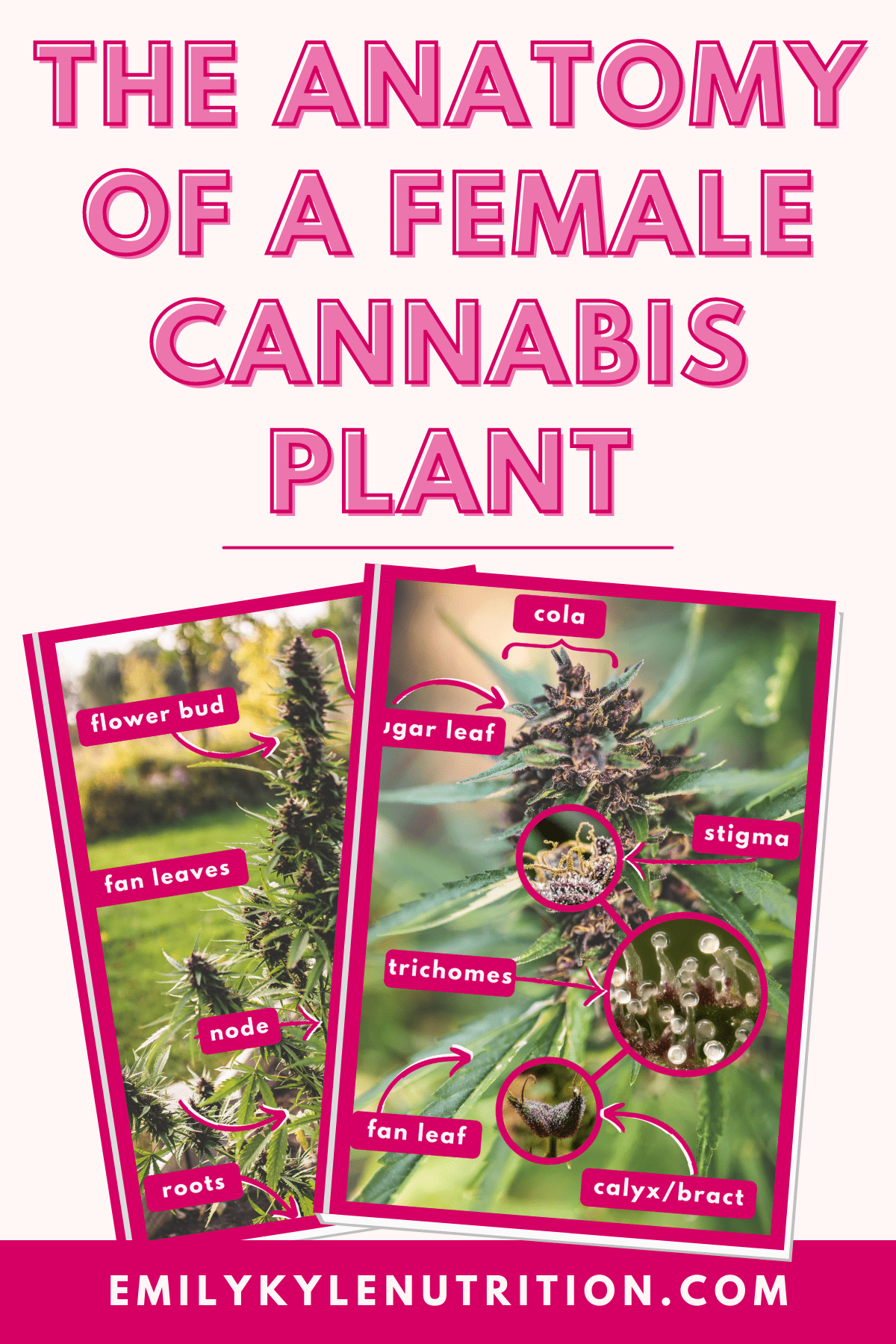
Article Features
- Labeled pictures for easy identification
- A beginner ‘s guide to understanding the different parts of the plant
- Want to skip the hard work? Shop with me and have my high-quality cannabis products delivered directly to your door! Now shipping across the US.
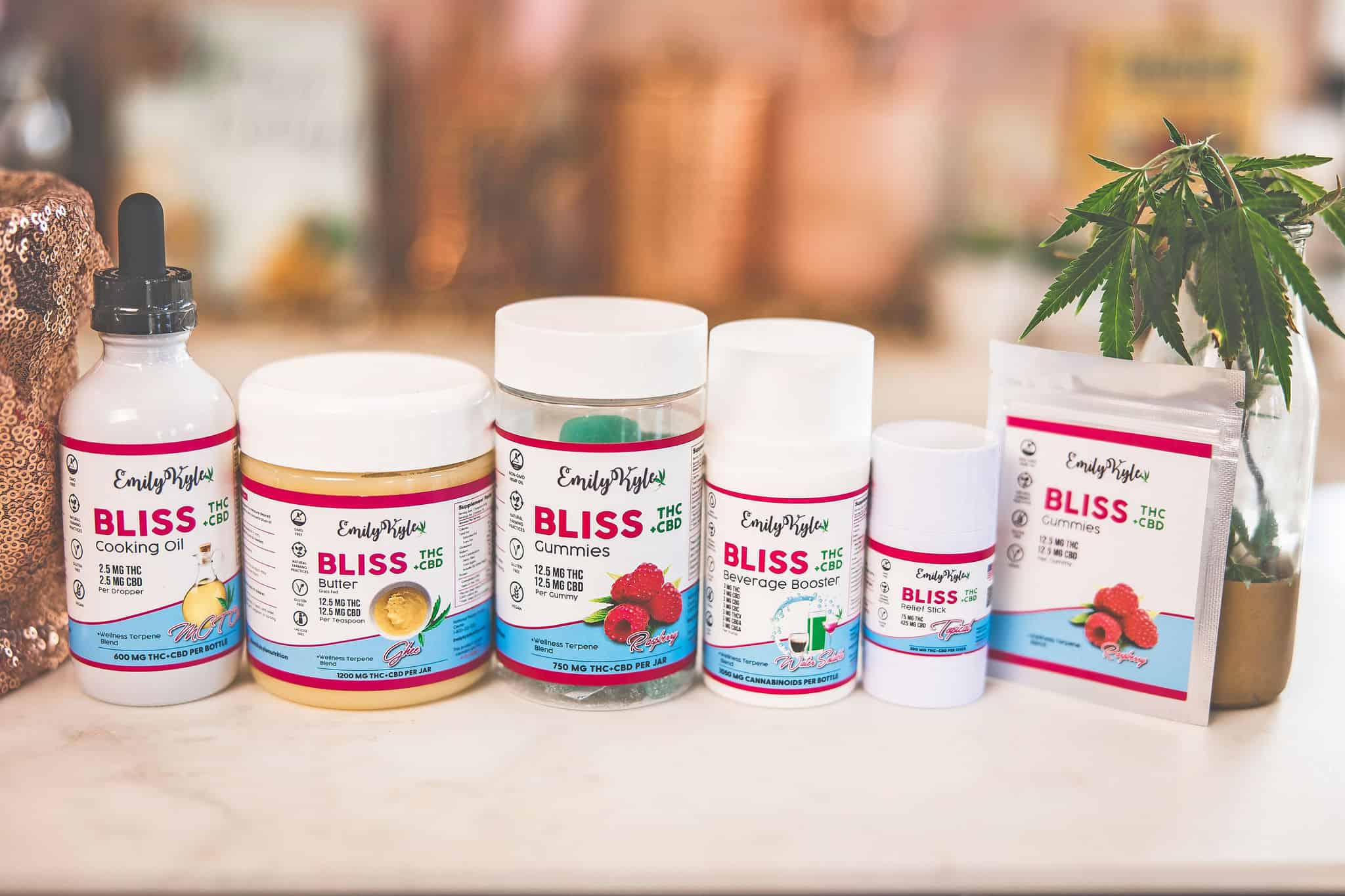
Why You Will Love This Guide
I used cannabis every day for eight years before ever seeing a real, live cannabis plant growing in the ground. Crazy right?
Like me, and maybe you, many people use cannabis as a medicine long before they ever encounter a live plant.
This is certainly true for most members of my Well With Cannabis Insiders Club.
Of course, it is no surprise that it can be confusing to try to understand all the different names used to describe the plant.
Flowers, buds, fan leaves, sugar leaves, stems, trichomes, and more.
While my cannabis terms and abbreviations guide may help, I will be breaking it down even deeper for you in this beginner-friendly guide.
Join me as we explore the different parts of a cannabis plant, why we want female plants, and discover which parts benefit you and your unique needs.
🎥 Watch the Video
Prefer to watch or listen to this blog post instead? Click to watch the full video.
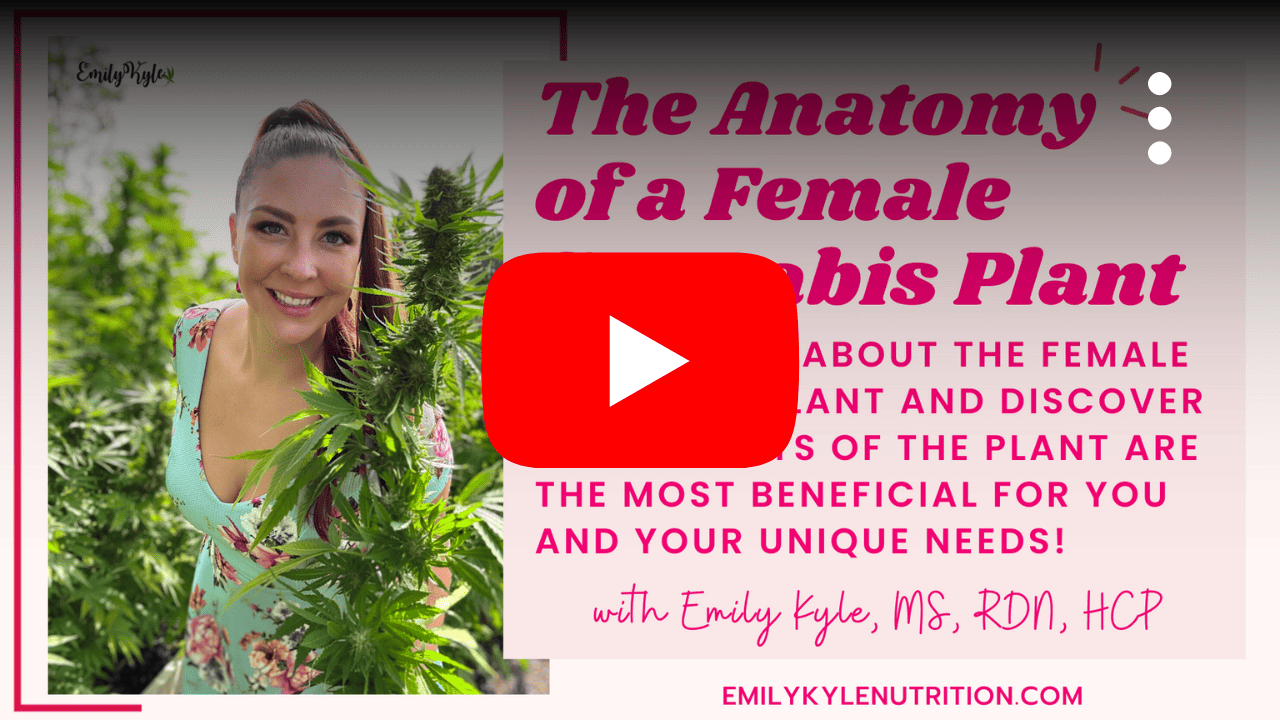
Meet The Female Cannabis Plant
Premade cannabis products like edibles and vapes are much easier to come by these days as more and more people discover the benefits of cannabis.
However, real, live cannabis plants remain elusive because, despite legalization, growing cannabis remains illegal in most states.
Unfortunately, this means that most people are not familiar with the plant.
This can lead to a lot of confusion surrounding names for certain parts.
I hope these pictures and this guide can help you better understand how the plant looks, functions, and grows – even if you have never seen one in real life – yet!
As we explore the parts of a female cannabis plant, I want you to keep in mind that the medicine, both cannabinoids and terpenes, is contained in the trichomes.
For many people, this is the most important thing.
For this reason, I will include a note with each heading indicating how many trichomes each part of the plant typically contains.

Cola and Flower Buds
In this guide, we are only talking about female cannabis plants. This is applicable to both autoflower and photoperiod plants indoors or outdoors.
Yes – cannabis plants come in two sexes, each producing a different flower.
You can learn more about male cannabis plants here, but they are ineffective in producing the medicine we want; therefore, we are not considering them here.
The female plant produces the type of flower we want for gathering the most cannabinoids and terpenes, potentially up to 20x more than a male plant1.
Looking at the picture above of a female plant, you can see that the cola is the large portion on the top of the plant, consisting of a cluster of flower buds growing together.
This appears to be one big bud but is a collection of hundreds of smaller flower buds.
While one main cola appears at the top, additional small colas can be found on the lower branches.
The cola contains many parts we will discuss next, including the trichomes, sugar leaves, bract and calyx, stigma, and pistil.

The cola and flower buds contain nearly all of the plant’s trichomes.
Trichomes
Cannabis trichomes are important because they produce resinous oils that contain cannabinoids and terpenes – essential plant medicine.
These tiny, crystal-like, sticky glands are found primarily on the flower buds but can also be found in smaller amounts on other parts of the plant.
Trichomes contribute to the plant’s taste, smell, and health benefits.
They are the reason why different strains of cannabis can be more potent than others and why the smell can vary so greatly.
You can learn more about trichomes here.
Remember, trichomes contain cannabinoids and terpenes.
Cannabinoids are essential because they are the THC, CBD, CBG, CBN, and more we are looking for.
Terpenes are important because they contain health benefits, create the plant’s aroma, and help the plant protect itself from predators.
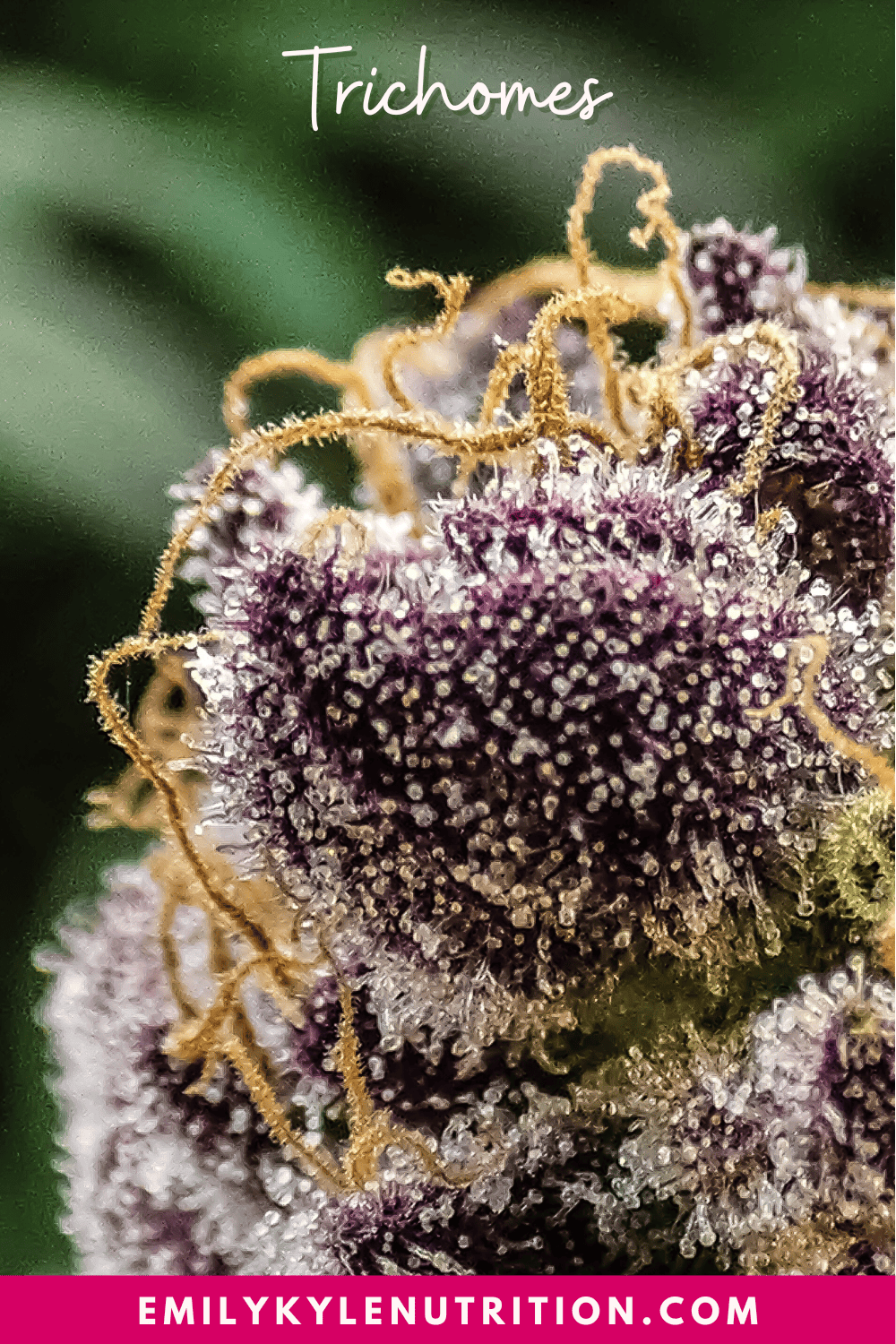
The trichomes are the most crucial part of the plant because they contain cannabinoids and terpenes.
Sugar Leaves
Sugar leaves grow on the cola, extremely close to the flower bud.
They get their name because they are covered in trichomes, making a sugar-coated appearance on the leaves.
While not as potent as the flower buds, these leaves are often referred to as trim and perfect for making edibles.
They are much smaller than fan leaves, grow together with buds, and contain significantly higher amounts of trichomes.
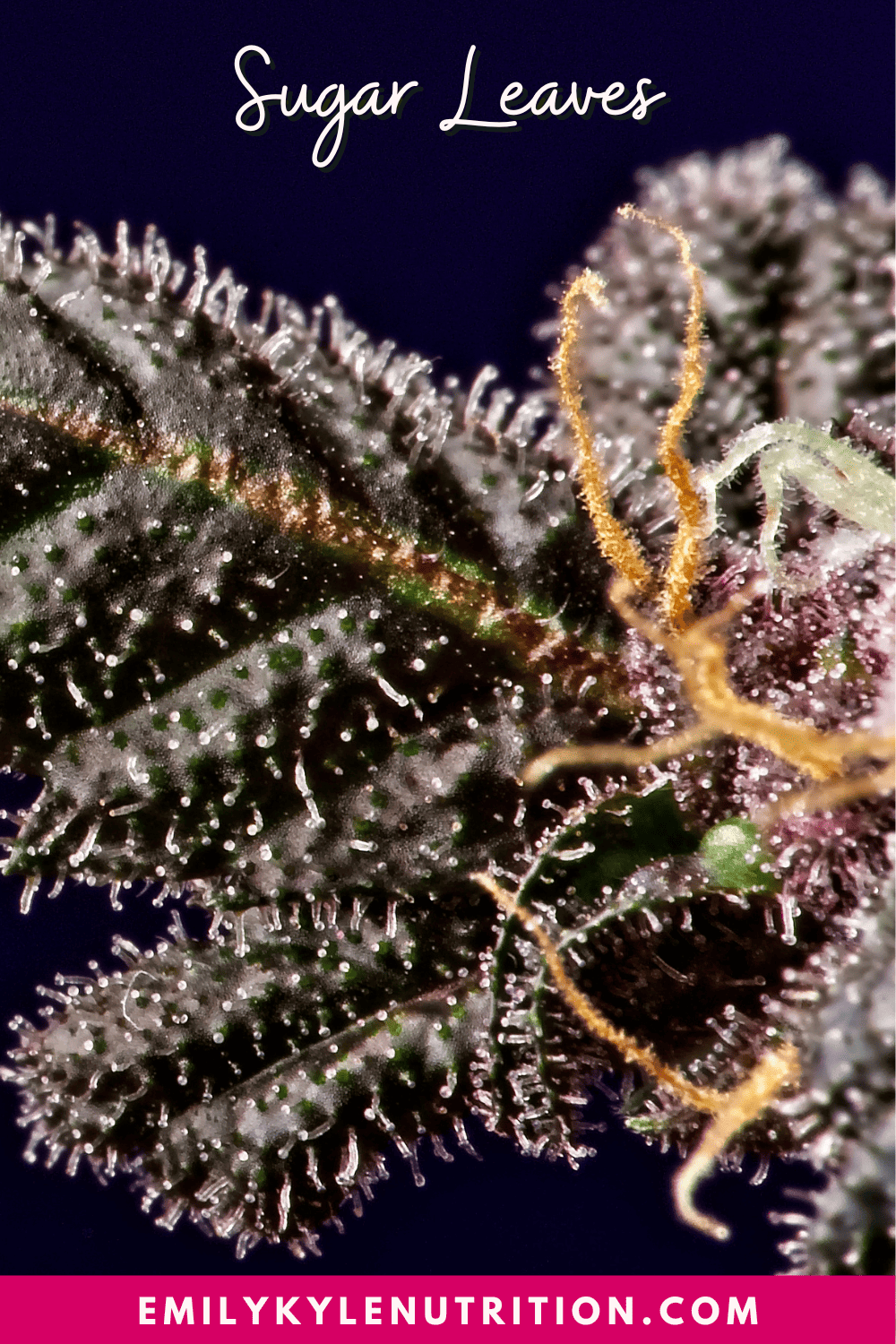
The sugar leaves contain a high amount of trichomes.
Bract and Calyx
The bract is the part found in the green female reproductive area with a tear-like structure.
Bracts are covered with many trichomes and usually have high amounts of cannabinoids.
Inside the bract is where the calyx exists.
You can’t see the calyx with your naked eyes, but it’s right there, protecting the ovules.

The bract contains a high amount of trichomes.
Pistil and Stigma
The pistils are the part of the flower that looks like thin, fuzzy strands of hair.
The stigma is the top of the flower’s pistil, collecting pollen grains from the male cannabis plants.
When the plant is young, the stigmas are colored white but become yellow as they get closer to the harvest stage.
Many home growers want to prevent the stigmas from collecting pollen to increase the yields.
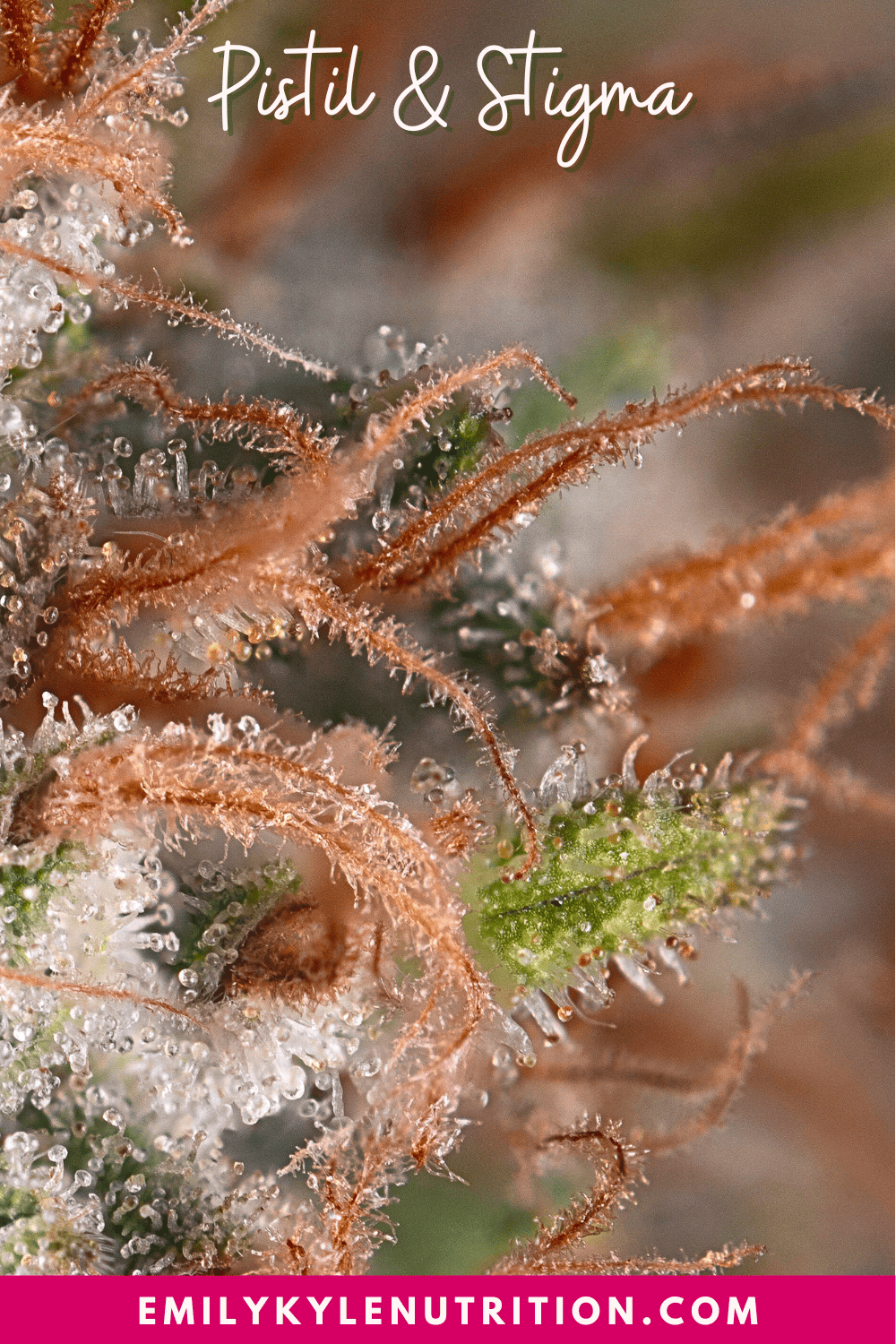
The pistil and stigma contain no to very few trichomes.

Fan Leaves
Fan leaves are the large leaves on the body of the cannabis plant. Their main purpose is to capture light from the sun for photosynthesis.
Most fan leaves do not have many trichomes, so they are not the first choice when making edibles.
However, many people use the fan leaves for their nutrition benefits.
Fan leaves are nutrient-dense, just like any other dark green leafy vegetable. They can be juiced, added to a smoothie, made into a salad, and more.
Additionally, if there are any trichomes on the fan leaves and they are consumed raw, you will reap the benefits of cannabidiolic acids like CBDA and THCA.
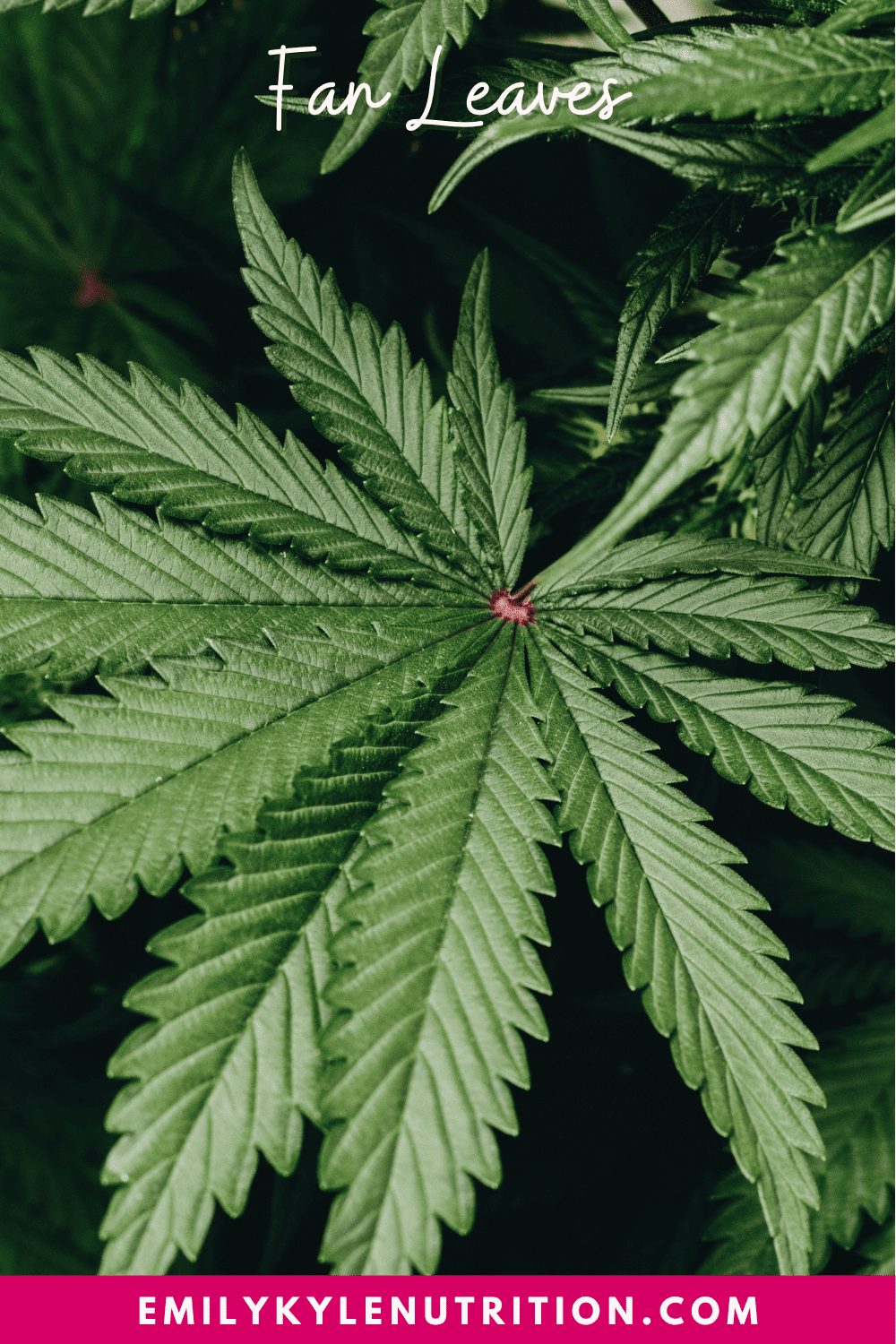
Fan leaves contain no to very few trichomes and, instead, are often used for their nutrition benefits.
Stalk and Stems
The stalk provides stability and structure to the cannabis plant.
The main stalk grows from the root system and holds all the branches and leaves.
The stalk is very strong and contains tough fibers used to create textiles, clothing, paper, and more.
The stems are the smaller branches that grow off of the stalk.
Generally, the stems do not contain many trichomes and are not often used for any meaningful purposes.
However, the closer the stems get to the flower bud, the more likely they will have trace amounts of trichomes.
People often use these stems to make stem tea.

The stalk does not contain trichomes. Stems contain very few trichomes.
Roots
Like any other plant, the cannabis root grows downward into the soil from the main stalk.
The main root of a cannabis plant is known as a taproot.
The functions of the roots include pulling nutrients, water, and oxygen from the soil to help the plant grow healthy and strong.
The roots also work in conjunction with the stem to provide stability for the plant.
There is preliminary evidence to suggest that cannabis roots contain many health benefits on their own.
You can learn more about the benefits and how to make your cannabis root tincture here.

The roots do not contain trichomes but do have their reported health benefits.
Conclusion
I hope this guide helps you to identify the different parts of the cannabis plant more easily.
This is so important because all of the parts are distinctly different, and some are more beneficial to you than others.
If you want to go even deeper into learning about the cannabis plant itself, please join me in my Cannabis Compass Online Course.

Everything you wish someone taught you…
The Cannabis Compass Online Course will show you how to use, apply, and dose cannabis safely and effectively so that you can begin to manage your anxiety, pain, and inflammation the natural way from the comfort of your own home. Learn more below.
More Cannabis Education
Articles & How-To Guides
Cannabis Terms & Abbreviations: Free Printable Guide
Articles & How-To Guides
New to Cannabis? Start Your Journey Here!
Articles & How-To Guides
Male vs. Female Cannabis Plants » Why It’s Important
Growing Cannabis


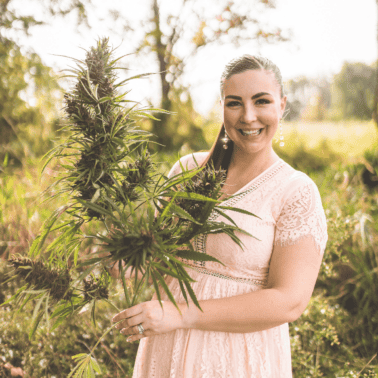
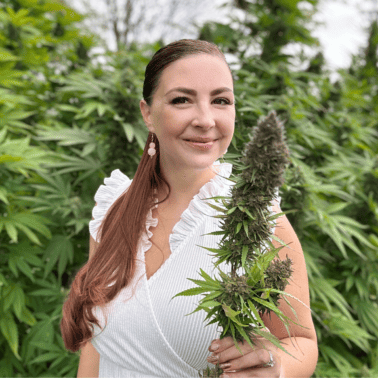
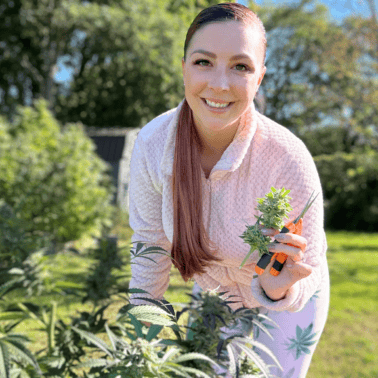
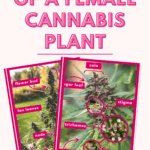








First time growing from seed,,fingers crossed! My question is, if I don’t catch a male and get rid of it in time and the female produces seeds, can I grind the seeds with the rest of plant? Are there any benefits to using the seeds?
Congrats on embarking on your growing journey, Kim! It’s always exciting to start something new 🌱 While you could grind the seeds along with the rest of the plant, you might not want to. The seeds themselves don’t contain cannabinoids like THC or CBD. However, don’t let that discourage you from appreciating the seeds for their own worth! Hemp and cannabis seeds are nutritional powerhouses, packed with benefits. They’re a great source of complete protein, rich in essential fatty acids like omega-3 and omega-6, and they have antioxidant effects. They can contribute to heart health, aid in digestion, and even support healthy skin. So, while they might not contribute to the potency of your plant product in the way you might hope, they’re incredibly beneficial in their own right for various health reasons.
If you end up with seeds, consider using them in your diet. You can add them to smoothies, salads, or make hemp seed milk! There’s a wealth of nutritious value waiting to be unlocked in those little seeds.
Don’t hesitate to reach out if you have more questions or just want to share your progress. Happy growing! 🌿
Hi there, I am baking my brownines now, but am unsure what size the serving squares should be. Can you help?
Thanks!
Hi Bonnie. The size of the serving squares can vary depending on how strong you want each serving. A standard approach is to cut an 8-inch pan of brownies into 2-inch squares, which gives you 16 brownies. But if you prefer smaller or larger portions, feel free to adjust! When it comes to consuming edibles, starting low and going low is highly recommended so making smaller serving sizes is best. Happy baking.
Thank you for your informative newsletter, Emily. I used to be staunchly anti-cannabis. At least, I was until in my 50’s, having gone home to say goodbye to my Father who had a couple of months to live, I was given half a mini pumpkin muffin to eat and my RLS/WED stopped almost immediately. I was sold!!
Being new to using cannabis I was intrigued by the breakdown of the female plant.
What I am wondering about now is the length of time it takes to grow from seed to harvest and are timings different for different varieties grown?
Hi Anngee. We’re delighted that you’ve found our newsletter enlightening and that you’ve had such a transformative experience with cannabis. When it comes to growing cannabis, the timeframe can fluctuate quite a bit based on several factors. Typically, the journey from seed to harvest could span anywhere from 8 weeks to 7 months. This is influenced by the specific strain of cannabis you’re cultivating, as well as whether you’re growing indoors or outdoors. Notably, auto-flowering seeds usually require less time than photoperiod seeds.
Growing cannabis requires patience, but the rewards can be substantial. Best of luck on your new adventure!
What are thought on infusing hops with coconut oil for the terpenes? I’ve heard hops have a good amount of terpenes that are medicinal. I the was thinking about mixing oil with feco for the medicinal value. Am I just grasping at straws? Thank you for reading this and any feedback would be greatly appreciated.
Glenn
Hi Glenn. Infusing hops with coconut oil to extract terpenes is certainly an exciting idea! Hops do contain a significant amount of terpenes, which are credited for their medicinal properties. While the concept is intriguing, it’s important to remember that the extraction and infusion process can be a delicate matter. If you decide to proceed, make sure to follow a reliable guide, ideally one that includes precise measurements and temperatures. We do not have experience with hops at this time.
Good luck with your infusion experiments and be sure to let us know what you try!
I refer to your information on how to make ,grow,and infuse marijuana . I find learning from you is easy to understand
Hi Karen. We’re so glad to hear that you find the information easy to understand! It’s our goal to make the process of growing, making, and infusing cannabis as straightforward as possible. Remember, we’re always here to help, so don’t hesitate to reach out if you have any questions!
Here in Florida we are still on medical use, if it passes eventually to Rec use, then hopefully I can eventually grow my own supply.
Hi Ben. It’s exciting to see how attitudes towards cannabis are evolving, and the possibility of recreational use becoming legal in Florida is indeed on the horizon! From what I hear, a campaign is currently underway to legalize home cultivation. If successful, this could open doors for individuals like yourself to grow your own supply. Fingers crossed!
This was SO informative, Emily! Thank you! I thought I knew all the parts of a plant from the different books and videos and other things I’ve consumed, but I had never heard of pistal before!
Hi Courtney. We love that you learned something new from us! Emily works hard to continuously improve the cannabis education she offers and it’s always rewarding to receive such wonderful feedback. Thank you!